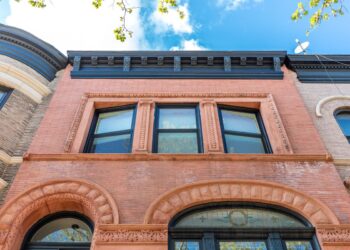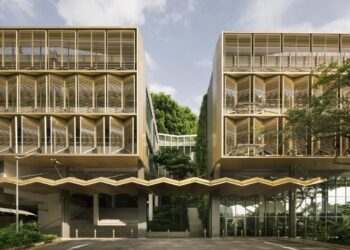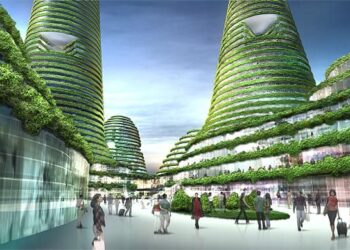In today’s rapidly evolving world, the call for sustainable practices in every industry has become stronger than ever. Architecture, as both an art and a science, is undergoing a radical transformation to meet the challenges of environmental conservation, energy efficiency, and resource management. This article explores the concept of sustainable architecture, delving into its fundamental principles, notable global examples, cutting-edge technologies, and the policies that are shaping its future. It also discusses the benefits and challenges associated with sustainable building practices and provides a comprehensive look at how innovative design is paving the way for an eco-conscious future.
Sustainable architecture is more than a trend—it is a necessary evolution in building design and construction that addresses the critical need for reduced environmental impact. With cities expanding and resource consumption rising, architects and builders worldwide are embracing solutions that minimize waste, lower carbon footprints, and optimize energy efficiency. Sustainable architecture integrates ecological principles with modern technology to create structures that are efficient, resilient, and healthy for both people and the planet.
The movement emphasizes using renewable resources, innovative design methods, and responsible construction practices. By focusing on sustainability, architects not only contribute to mitigating climate change but also enhance occupant wellbeing, reduce costs in the long term, and inspire communities to reimagine the possibilities of urban and rural spaces.
Fundamentals of Sustainable Architecture
Sustainable architecture is built on several foundational principles that drive the design and construction of eco-friendly buildings. These guiding concepts ensure that projects contribute to environmental sustainability, enhance energy efficiency, and support community well-being.
Key Principles
A. Energy Efficiency:
-
Designing buildings that consume minimal energy through optimized insulation, smart heating and cooling systems, and energy-efficient appliances.
B. Resource Conservation:
-
Utilizing renewable materials, reducing waste during construction, and incorporating recycled or reclaimed components in building structures.
C. Environmental Impact Reduction:
-
Minimizing carbon footprints by using green technologies, planning for low-impact construction methods, and leveraging natural energy sources such as solar and wind power.
D. Health and Wellbeing:
-
Creating spaces that promote good indoor air quality, natural lighting, and ergonomic design, which contribute to improved physical and mental health of occupants.
E. Resilience and Adaptability:
-
Designing buildings to withstand adverse climate conditions, support long-term durability, and easily adapt to changing environmental standards.
Global Examples of Sustainable Architecture
Around the world, several projects exemplify the successful integration of sustainability with innovative architecture. These buildings illustrate how thoughtful design can achieve both aesthetic excellence and environmental responsibility.
North America: Pioneering Eco-Friendly Designs
North America has been at the forefront of sustainable architecture with projects that blend modern aesthetics with eco-friendly innovations.
A. The Bullitt Center (Seattle, USA):
-
Known as the “greenest commercial building” in the world, the Bullitt Center is designed to be energy-positive, meaning it produces more energy than it consumes. Its systems include solar panels, rainwater harvesting, and composting toilets, making it a benchmark for zero-energy design.
B. The Edge (Amsterdam, Netherlands):
-
While not in North America but influential globally, The Edge is a smart building that maximizes energy efficiency and occupant comfort through advanced IoT integrations and sustainable materials. Its design focuses on optimal natural light and energy conservation practices.
C. Passive House Developments:
-
Across various regions, including several projects in Canada and the USA, passive house standards are being applied to residential and commercial buildings. These structures boast extreme energy efficiency by utilizing super-insulated building envelopes, high-performance windows, and mechanical ventilation systems with heat recovery.
Europe: Tradition Meets Innovation
Europe has a rich history of architectural excellence that now intersects with modern sustainable practices. Many European countries are renowned for their commitment to reducing energy consumption and preserving cultural heritage.
A. The Edge (Amsterdam, Netherlands):
-
Already mentioned above, this building is celebrated globally for its smart design, eco-friendly technologies, and data-driven approach to sustainability.
B. The Crystal (London, UK):
-
The Crystal is an exhibition center that serves as a model for sustainable urban development. It features advanced water recycling, efficient lighting systems, and renewable energy generation, demonstrating how public buildings can lead by example.
C. Eco-City Projects in Scandinavia:
-
Countries like Sweden and Denmark have launched eco-city initiatives that integrate green buildings with community planning. These projects emphasize pedestrian-friendly layouts, green roofs, and the extensive use of renewable energy sources, setting new standards for urban living.
Asia: Merging Tradition with Green Technology
Asia’s rapid urbanization presents both challenges and opportunities for sustainable architecture. Innovative projects across the continent are redefining urban landscapes while honoring traditional designs.
A. Wuhan Greenland Center (Wuhan, China):
-
As one of China’s ambitious projects, this skyscraper incorporates sustainable materials, energy-efficient systems, and smart design features that ensure minimal environmental impact despite its towering height.
B. One Central Park (Sydney, Australia):
-
Although Australia is geographically part of Oceania, projects like One Central Park in Sydney integrate vertical gardens, solar panels, and water recycling systems. This project demonstrates how modern design can coexist with biophilic elements to create healthier urban environments.
C. Green Buildings in Japan:
-
Japan is renowned for its innovation in sustainable design. Many buildings incorporate seismic-resistant techniques with energy-efficient systems, melding functionality with aesthetics. Modular construction and compact design are particularly significant in Japan’s densely populated urban areas.
Latin America: Innovation in Resource-Limited Settings
In Latin America, sustainable architecture is often driven by necessity, where resource scarcity fuels creative, cost-effective solutions.
A. Earthship Biotecture (Various Locations):
-
Earthship buildings, designed with recycled materials and natural insulation properties, are gaining popularity in regions that experience frequent energy shortages. These self-sufficient homes utilize passive solar design and water harvesting systems to achieve near autonomy.
B. Urban Regeneration Projects:
-
Cities across Latin America are revitalizing old structures with green retrofits. These initiatives often include energy-efficient lighting, renewable energy installations, and eco-friendly landscaping, thus preserving the cultural history while promoting sustainability.
C. Community-Led Green Spaces:
-
Beyond individual buildings, many Latin American cities are incorporating sustainable design into community planning. Urban gardens, renewable energy communal centers, and water management systems are integrated into public spaces, enhancing the quality of urban life.
Africa: Sustainable Solutions Amid Rapid Growth
Africa presents a unique context where sustainable architecture is both a challenge and a driver for development. As cities expand rapidly, innovative solutions are being implemented to reconcile modernity with sustainability.
A. Eco-Friendly Urban Projects in South Africa:
-
Projects in South Africa often focus on creating sustainable living environments in both formal and informal settlements. Using locally sourced materials and traditional techniques, these projects ensure that sustainable practices are culturally relevant and economically viable.
B. The New Administrative Capital (Egypt):
-
Egypt’s ambitious plans for a new capital emphasize sustainability in planning and construction. Green spaces, energy-efficient infrastructure, and integrated public transportation systems are key components that underline the city’s long-term vision.
C. Rural Sustainable Housing Initiatives:
-
Across various African nations, rural housing projects are incorporating sustainable building methods that utilize natural materials such as mud, bamboo, and thatch, combined with modern design techniques to enhance durability and energy efficiency.
Technological Innovations in Sustainable Architecture
Modern technology is at the heart of the sustainable architecture movement. New tools and methods are transforming how buildings are designed, constructed, and maintained.
Cutting-Edge Design Tools
Advances in digital technology have revolutionized the architectural process. Computer-aided design (CAD), Building Information Modeling (BIM), and simulation software allow architects to experiment with sustainable solutions before construction begins.
A. Building Information Modeling (BIM):
-
BIM facilitates a collaborative approach where every aspect of a building’s performance can be simulated. Energy consumption, material usage, and environmental impact are all integrated into the design phase, ensuring more sustainable outcomes.
B. Virtual Reality (VR) and Augmented Reality (AR):
-
These technologies let architects and clients virtually walk through models, making it easier to visualize the potential of sustainable designs and make informed decisions early in the process.
C. Simulation Software:
-
Software tools are used to simulate natural light, airflow, and energy usage within proposed designs. This ensures that the building is optimized for energy efficiency and occupant comfort from the outset.
Renewable Energy Integration
A key facet of sustainable architecture is the seamless integration of renewable energy sources. The modern building is expected not only to reduce its energy needs but to produce energy as well.
A. Solar Energy:
-
Photovoltaic panels and solar thermal systems are now standard in many sustainable designs. These systems can be seamlessly incorporated into facades and rooftops, contributing significantly to a building’s energy needs.
B. Wind Energy:
-
In regions with consistent wind patterns, small-scale wind turbines provide an additional layer of renewable energy. Designs today accommodate these turbines by ensuring structural stability and optimal placement.
C. Geothermal Systems:
-
Geothermal heating and cooling systems extract energy from beneath the earth’s surface, offering a highly efficient method of temperature control. These systems reduce the reliance on traditional HVAC systems and lower overall energy consumption.
Smart Technology and Energy Management
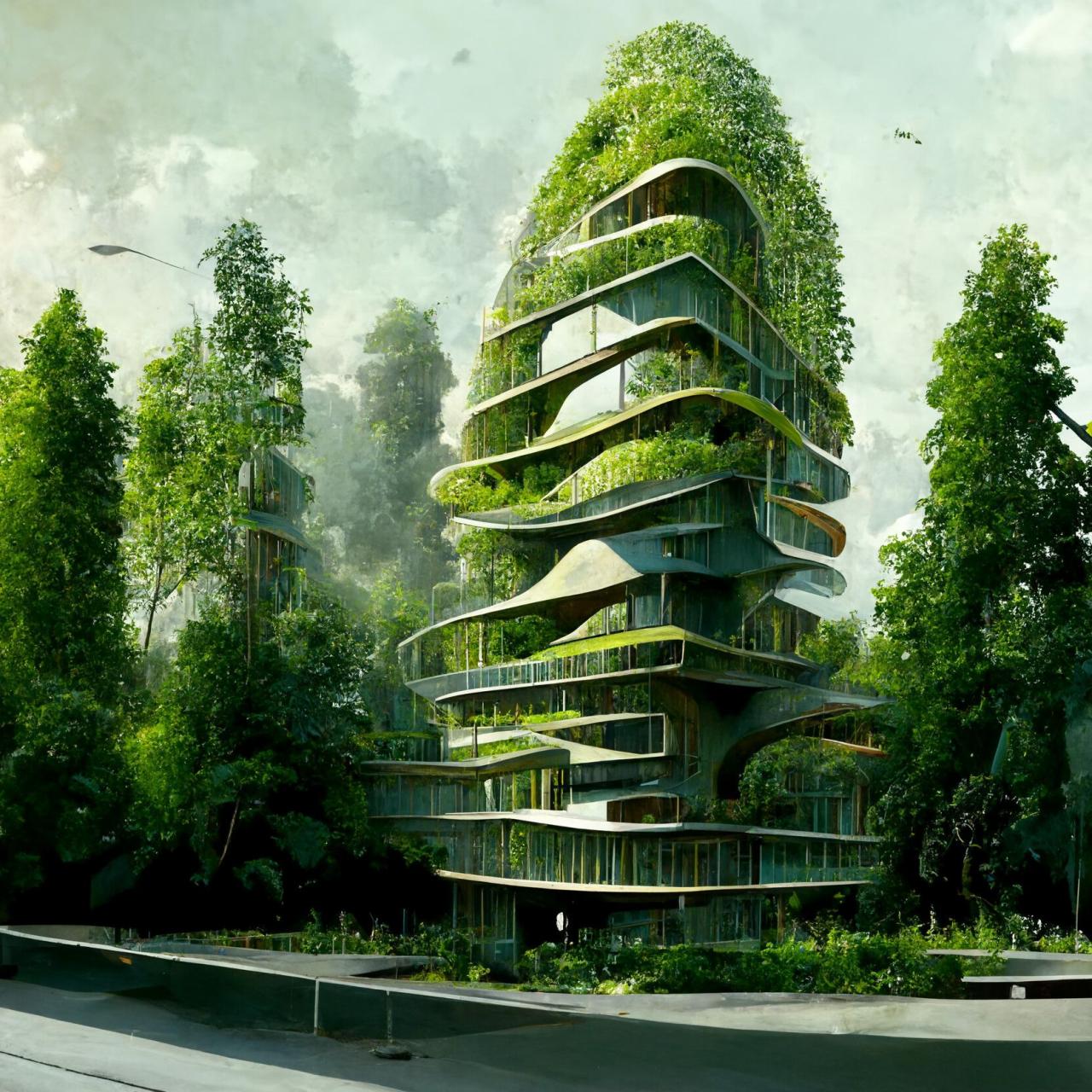
Smart technology is increasingly becoming an integral part of sustainable architecture. Automation and data analytics are central to optimizing a building’s performance.
A. Smart Grids and Energy Management Systems:
-
Integrated systems monitor energy use in real time, dynamically adjusting power consumption to reduce waste. These smart grids ensure that every watt of energy is optimized.
B. IoT Sensors:
-
Internet of Things (IoT) devices embedded throughout a structure gather data on temperature, humidity, occupancy, and light levels. This data is used to optimize the building’s energy usage, improve occupant comfort, and alert managers to maintenance needs.
C. Automated Environmental Controls:
-
Modern buildings can adjust lighting, heating, and cooling based on occupancy patterns and external weather conditions. Automated systems ensure that energy is used efficiently without sacrificing comfort.
Policy and Regulatory Framework
Government policies and building regulations play a critical role in the adoption of sustainable architecture. Policy frameworks not only set standards but also provide incentives for builders and developers to invest in green technologies.
Government Incentives
A number of governments worldwide have introduced incentives to promote sustainable building practices. These can include tax credits, subsidies, and expedited permitting processes.
A. Tax Incentives:
-
Many jurisdictions offer tax credits or rebates for buildings that meet certain energy efficiency or green design standards.
B. Subsidies for Renewable Technologies:
-
Financial support for renewable energy systems such as solar panels or geothermal installations helps offset initial capital expenditures.
C. Grants and Loans:
-
Specific programs target sustainable development with grants and low-interest loans, encouraging innovation in green building design.
Building Codes and Standards
Countries and regions have developed comprehensive codes that demand higher standards of energy efficiency, water conservation, and overall environmental responsibility in the construction industry.
A. International Green Building Standards:
-
Standards such as LEED (Leadership in Energy and Environmental Design) and BREEAM (Building Research Establishment Environmental Assessment Method) guide architects and engineers in their projects.
B. Local Building Regulations:
-
Many cities have adopted local codes that mandate sustainable practices such as energy-efficient lighting, water recycling systems, and the use of sustainable materials.
C. Certification Programs:
-
Certifications ensure that a building’s design and construction meet rigorous environmental standards, providing both accountability and market value.
The Impact of Sustainable Architecture
Sustainable architecture offers far-reaching benefits for society, the economy, and the environment. Its impact extends well beyond the immediate savings in energy consumption and resource use.
Environmental Benefits
Sustainable buildings reduce environmental degradation by minimizing emissions and conserving resources. They create ecosystems that are more aligned with natural processes.
A. Reduced Carbon Footprint:
-
By incorporating renewable energy and energy-efficient systems, sustainable architecture significantly reduces the emissions associated with traditional buildings.
B. Conservation of Resources:
-
Through the use of recycled, reclaimed, or renewable materials, sustainable buildings lessen the strain on natural resources.
C. Enhanced Biodiversity:
-
Integrating green spaces such as rooftop gardens and vertical plantings promotes biodiversity, creating microhabitats within urban areas.
Economic Advantages
Investing in sustainable architecture can yield economic benefits that extend over the life of a building. Reduced energy consumption translates into lower operational costs and increases the long-term value of the property.
A. Energy Cost Savings:
-
Lower energy consumption not only reduces utility bills but also provides a hedge against fluctuating energy prices.
B. Increased Property Value:
-
Buildings that adhere to green standards often command higher market prices and attract premium tenants.
C. Job Creation:
-
The green construction sector creates specialized jobs in renewable energy, building technology, and sustainable design, stimulating local economies.
Social Impact
Sustainable architecture also has a profound effect on the communities it serves. Healthier, well-designed spaces improve quality of life, increase productivity, and strengthen social bonds.
A. Improved Indoor Environment Quality:
-
Enhanced natural light, improved air quality, and thermal comfort contribute to better health outcomes for occupants.
B. Community Engagement:
-
Sustainable projects often include public spaces and community gardens, fostering a sense of unity and shared responsibility.
C. Educational Opportunities:
-
Green buildings serve as living laboratories for sustainable practices, educating the public and inspiring future generations of architects and engineers.
Overcoming Barriers in Sustainable Architecture
Despite the numerous benefits, challenges remain in the widespread adoption of sustainable architecture. Addressing these barriers is essential for a comprehensive transformation of the built environment.
Financial and Technical Barriers
A. Upfront Costs:
-
Although long-term savings are significant, the initial investment for sustainable technologies can be higher than traditional building methods.
B. Technical Expertise:
-
There is a learning curve associated with new materials, technologies, and design standards. Continuous education and collaboration among industry experts are needed.
C. Retrofit Challenges:
-
Upgrading existing structures to meet modern sustainability standards often requires creative technical solutions and significant capital.
Policy and Market Dynamics
A. Regulatory Hurdles:
-
In some regions, outdated building codes or lack of government support can slow the adoption of sustainable building practices.
B. Market Awareness:
-
Increasing public awareness about the benefits of green buildings is essential to drive demand. Education campaigns and transparency in reporting building performance can help.
C. Stakeholder Collaboration:
-
Successful sustainable projects require close collaboration between architects, engineers, policymakers, and the community.
The Future of Sustainable Architecture
Looking ahead, the future of sustainable architecture is both bright and challenging. As technology advances and global environmental pressures mount, the built environment must adapt through innovation and a renewed commitment to sustainability.
Emerging Trends
Innovation in sustainable architecture continues to accelerate. Several key trends point toward a future where buildings not only consume less but actively contribute to a healthier ecosystem.
A. Smart Cities Integration:
-
The future of urban development lies in the seamless integration of buildings into smart city ecosystems, where data and technology enhance energy management and community living.
B. Advanced Materials:
-
Researchers are developing new materials that are stronger, lighter, and more sustainable than ever before—such as self-healing concrete, bio-based polymers, and energy-generating glass.
C. Circular Economy Practices:
-
The concept of the circular economy encourages the reuse and recycling of materials, reducing waste and promoting long-term environmental sustainability.
Increased Global Collaboration
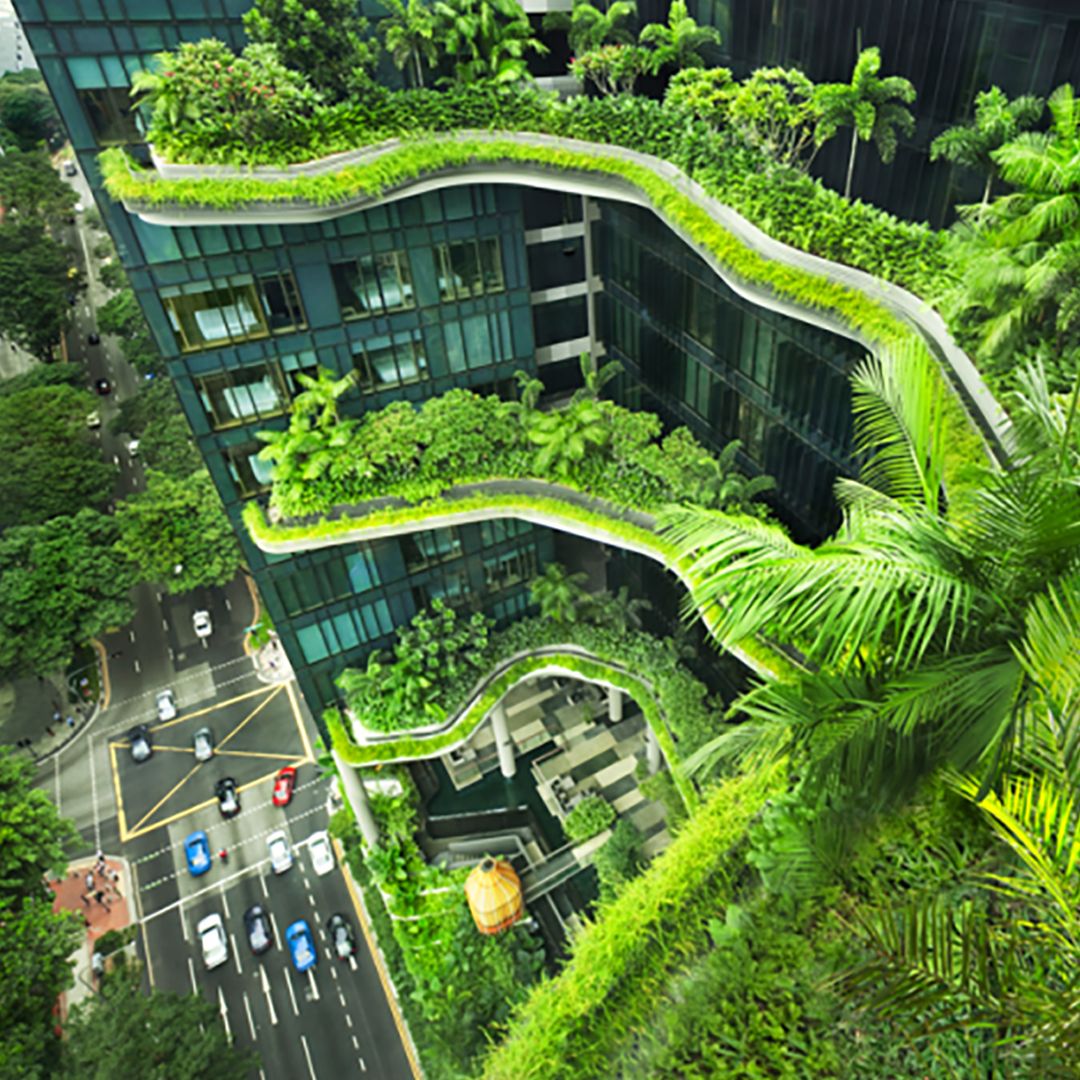
The need for sustainable architecture transcends national borders. Global collaboration on research, standards, and best practices is vital for addressing shared challenges.
A. International Forums and Conferences:
-
Regular global events bring together industry leaders, policymakers, and innovators to discuss progress and share breakthroughs in sustainable building practices.
B. Cross-Border Projects:
-
Collaborative projects between different nations can pool resources and expertise to create landmarks that set new standards in green design.
C. Shared Best Practices:
-
Open access to data and experience from successful sustainable projects can help regions with fewer resources leapfrog traditional construction practices.
Conclusion
Sustainable architecture represents not only a critical pathway to mitigating climate change but also a transformative approach to designing resilient, vibrant, and healthy communities. By embracing renewable energy, smart technology, and resource-efficient construction, architects around the globe are reimagining the future of our built environment. Projects from North America to Africa illustrate that sustainable design can be both innovative and inspiring, setting a benchmark for modern urban development.
The benefits—ranging from reduced environmental impact to improved occupant wellbeing—are clear. However, the journey is not without challenges, as financial, technical, and regulatory barriers must be overcome. Through global collaboration, continued innovation, and robust policy support, sustainable architecture can lead to a future where buildings enhance both our quality of life and the health of the planet.
As industries continue to evolve and environmental challenges mount, the need for sustainable practices in architecture will only grow. The work of today’s architects paves the way for tomorrow’s smart, eco-friendly cities—a vision that invites us all to participate in building a resilient and inspiring future.


